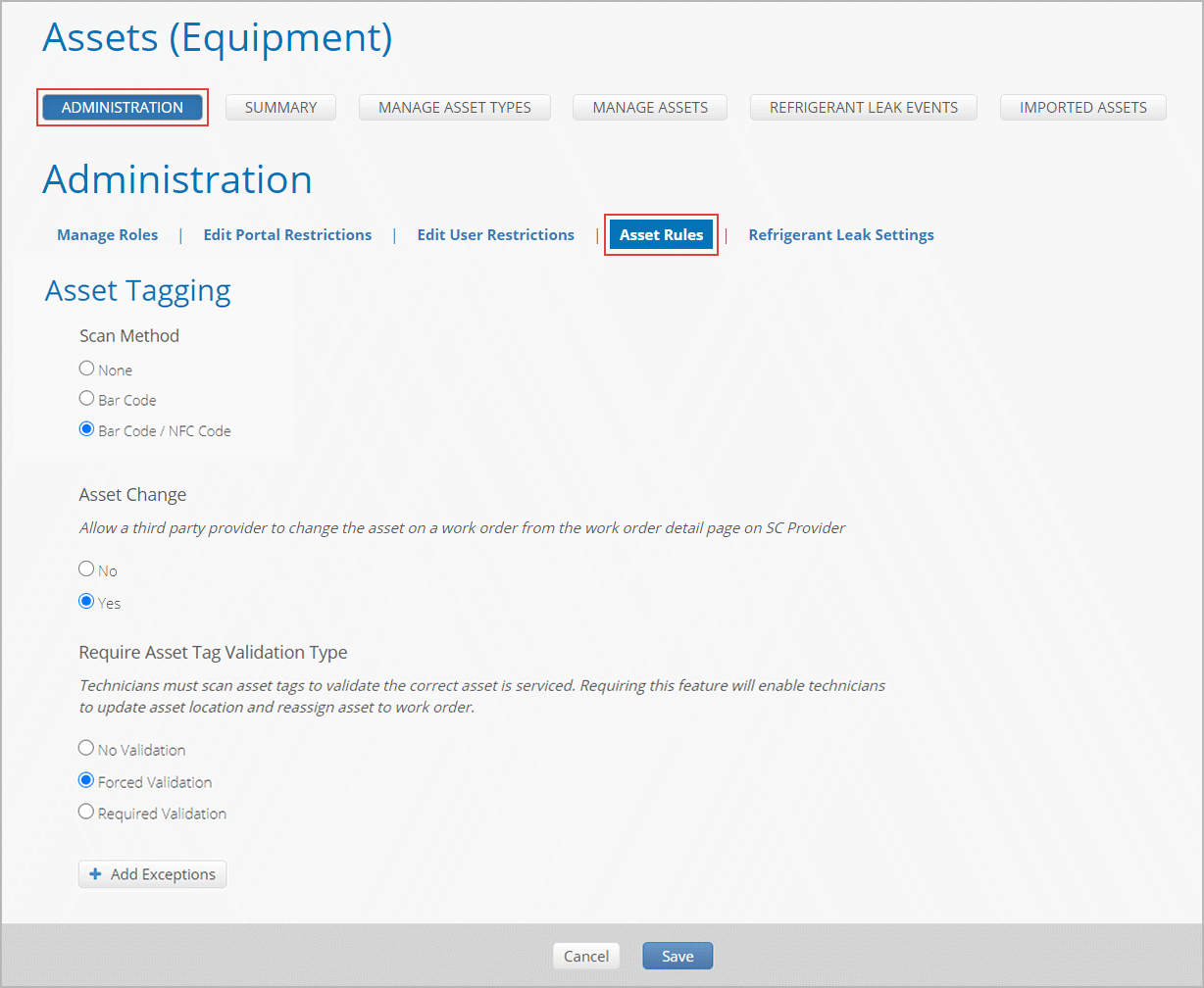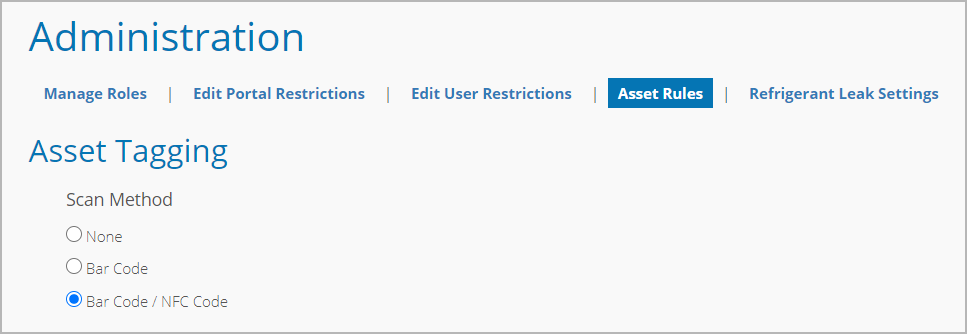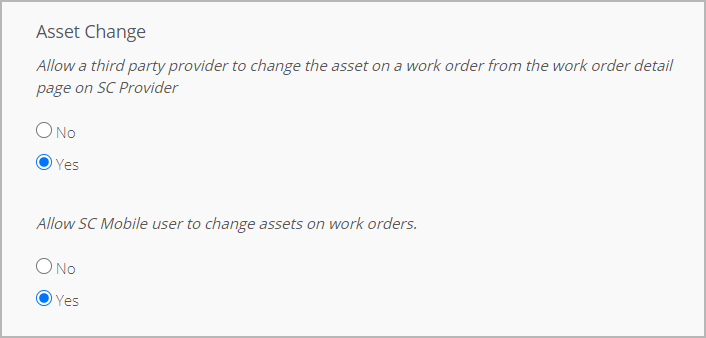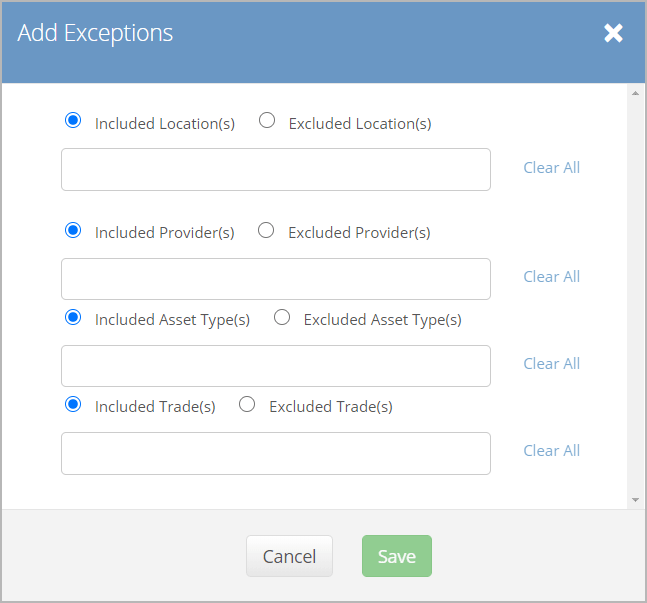Configuring Asset Rules
Anastasia Troichuk (Unlicensed)
Which scanning method should technicians and your employees use? How to prevent external providers and SC Mobile users from changing assets on work orders? Should assets be validated or not? All these rules can be configured on the Asset Rules page.
Accessing Asset Rules
You should have the Administrator role within Asset Manager to be able to manage asset scanning rules. Check Managing Roles to learn how to set this role for an employee.
- Click the menu icon in the upper-left corner, and select Assets (Equipment) > Administration.
- Switch to the Asset Rules section.

Setting Up Asset Scanning and Validation Rules
Here you can check what rules you can impose on your providers when it comes to scanning and validating assets on work orders. You can also set scanning rules for your employees who use the ServiceChannel mobile app.
- Navigate to the Asset Rules page.
- Under Scan Method, opt for the preferred scanning method (for both SC Provider users and SC Mobile users):
- Bar Code: Allows scanning vertical barcodes
 including QR codes
including QR codes  .
. - Bar Code / NFC Code: Permits scanning both barcodes and NFC codes.
- To prevent users (providers and your employees who use SC Mobile) from scanning asset tags, select None.

- Bar Code: Allows scanning vertical barcodes
Under Asset Change, indicate the following:
Whether external providers can change assets on work orders, remove assets from work orders as well as move assets from one location to another (in the Asset Manager database) via SC Provider.
Providers may need to change the asset in two cases:
- The scanned asset tag doesn’t match the asset tag linked to the work order.
- The location of the scanned asset doesn’t match the location of the asset linked to the work order.
Whether ServiceChannel mobile app users can change assets on work orders.

- Under Require Asset Tag Validation Type, specify whether or not asset validation is required.
- No validation: Technicians don’t need to validate assets to work on assigned service requests via SC Provider.
- Forced Validation: Technicians must validate assets to get down to work on assigned service requests.
- Required Validation: Technicians are required to validate the asset. If they cannot, the validation process can be skipped. In this case, technicians should specify the reason for being unable to validate the asset. The work order will contain a record saying that the asset isn’t validated.

(Optional) Add exceptions to the configured rules.
Expand this section to view how to add exceptions.1. Click Add Exceptions at the bottom of the page. The overlay for creating exceptions appears.

2. In the overlay, you can specify for which Locations, Providers, Asset Types, or Trades the scanning rules should be applied, or you can define for which of these criteria the rules should be ignored.- Want to apply the rules only for specific locations, providers, asset types, or trades?
Select the Included radio button to the left of the criterion, and pick the desired options from the drop-down list. - Want to apply the rules for all locations, providers, asset types, or trades except for some of them?
Select the Excluded radio button to the right of the criterion, and pick the options to be excluded from the rules.
3. Once all exceptions are specified, hit Save in the overlay. Exceptions get added to the Asset Rules page.
- Want to apply the rules only for specific locations, providers, asset types, or trades?
Click Save at the bottom of the page to put the rules into action.
-
Page:
-
Page:
-
Page:
-
Page:
-
Page: